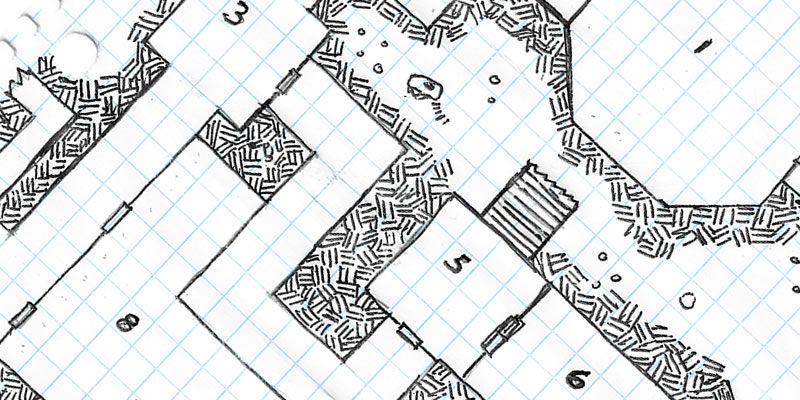
Then we move on to villains where three more huge tables give the DM plenty of options to choose or roll when they need a quick villain that’s not your standard bad guy. There’s a nice optional rule here about using a loyalty score to determine what NPCs will and won’t do in the face of danger. Then we get a three pages on NPC party members and hirelings which is something we never got in the official 4e books. The chapter begins with eight tables that let you quickly throw together memorable and unique NPCs just by rolling some dice. We’ll continue to see this throughout the DMG in every chapter. They provide framework and it’s up to you to fill in the blanks as appropriate for your gaming group. This edition is light on rules, and heavy on imagination. What this chapter really illustrated for me was that each section give you a very brief recount of what the intent is, but it leaves the specifics to the DM.
D&d 5e dmg dungeon maps how to#
This chapter covers how to manage XP budgets to create suitable encounters for your party’s level. From there we get helpful hints and many great tables that present numerous options detailing the different types of adventures, complications like plot-twists and side quests, how to create encounters with a strong focus on objectives and monsters, and how and when to use random encounters. The chapter begins with a good breakdown of what makes a good adventure and then talks about the difference between playing a published adventure and one you make up yourself. This is where the DMG really began to pay dividends for me. This is all I was interested in and what was here was enough for now. I will call out the great 2-page write-ups on the Feywild, Shadowfell, and Sigil. It’s very useful if your campaign spans the Multiverse, but for everyday adventures, especially the kind you generally see at low levels and introductory play, this is too much too soon.
D&d 5e dmg dungeon maps manual#
It’s essentially all the good stuff from every Manual of the Planes condensed into 25 pages. If you’re an experienced DM who’s ever flipped through a Manual of the Planes (any edition) then you can likely skip this chapter too. There is also guidelines for beginning play at higher levels and an interesting sidebar that recommends how much equipment, money and magic to give PCs starting above level 1 in low magic campaigns, standard campaigns, and high magic campaigns. The Tiers of Play section names the four tiers: The rest of what’s covered in these sections pretty much repeats what we already know from other 5e sources. There is new rules on losing renown and new rules for how to use renown for pious characters to measure their devotion. The Renown section talks briefly about attitudes of members and perks. The Faction section lacks the details about special missions we were hoping for, which was disappointing. Although these sections are only three pages each, there is some new and interesting material in there. If you’re an experienced DM and you’ve played any previous edition of D&D in the last few years then you can skip this chapter.įor experienced DMs the only things that you may want to take a look at quickly is the section on Factions & Renown and Tiers of Play. If you’re a new DM who’s never played before or you’re a player who hasn’t played in a very long time then this chapter provides a great introduction to world-building. All the tables reminded me of the original 1e DMG, whihc was a good thing. Every section has tables to help the DM use the mechanics quickly and easily. To say there are a lot of table in the 5e DMG is an understatement. There is a little bit of art that was borrowed from previous publications, but I can certainly forgive that. The fantasy worlds and creatures come to life on every page.
D&d 5e dmg dungeon maps full#
The full splash pages are beautiful and really give you a sense of what D&D is all about. After seeing the exceptional job done in the PHB and Monster Manual, I expected nothing less. The are in the DMG is everything I’ve come to expect in a 5e rule book. The art in this book is fantastic, starting with the great cover. Keep that in mind as you’re reading this review and as you’re reading the DMG. I may stumble along the way, but I’m going to have a lot of fun in the process. Show me the way and then let me walk the path on my own. It’s one of the things I’m enjoying most about 5e. This is the case throughout every chapter of the book, for better or worse. Imagination is more important that hard rules. There is a tremendous emphasis on sharing the general concept and leaving it to you the DM to decide on how to reach the specific.

Each section gives you just enough to get the point but not so much as to bog you down in rules and specificity. First of all I love the style of this DMG. After I’ve had my piece I’ll give you my final thoughts on the book and then it’s up to you to decide if you want to buy it or not.īefore I get into each section and each chapter I want to make a few general comments.


 0 kommentar(er)
0 kommentar(er)
